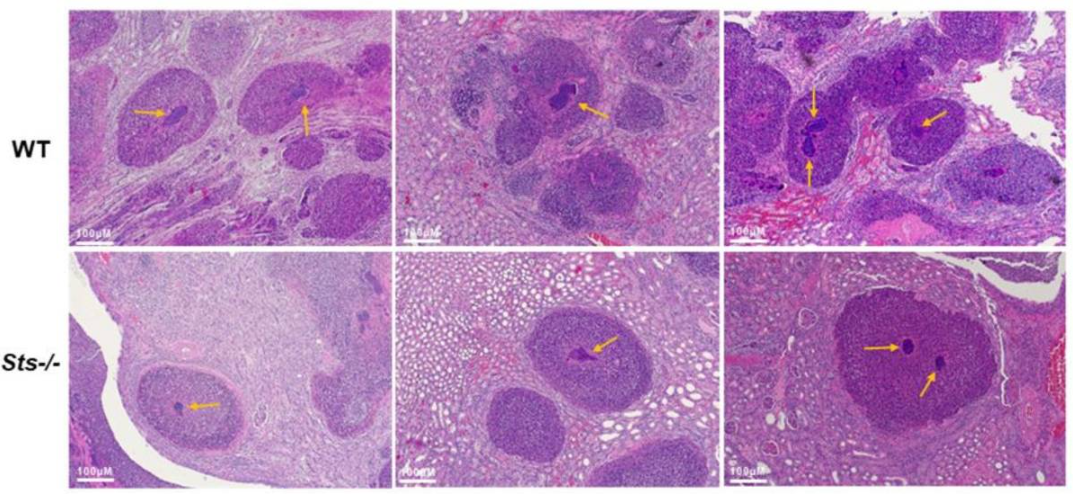
Reduced size of Staphylococcus abscess communities within Sts-/- mouse kidney abscesses
Background
Phosphatases Sts-1 and Sts-2 are two homologous proteins in humans which act as negative regulators of T cell receptor (TCR) signaling. These proteins regulate immune signaling through activity catalyzed by their shared C-terminal histidine phosphatase (HP) domain. The HP domain is a tyrosine phosphatase which dephosphorylates the kinases Syk and ZAP-70.
Technology
Dr. Nicholas Carpino developed a novel mouse model that has demonstrated resistance to systemic infection by human fungal pathogen Candida albicans, Gram-negative bacterial pathogen Francisella tularensis, and Gram-positive pathogen Staphylococcus aureus. The mouse model presents the double knockout of Sts-1 and Sts-2. This modification increases ZAP-70 phosphorylation and activation, which leads to enhanced downstream TCR signaling and elevated cytokine production. The absence of these proteins results in a marked increase in T cell proliferation and altered immune signaling pathways. These mutations enable the mice to withstand lethal inoculums of dangerous pathogens.
Advantages
Useful for testing novel compounds and treatment strategies - Provides a better suited animal model for studying antimicrobial immunity
Application
Mouse Model - Research Tool - Therapeutic Screening - Drug Delivery
Inventors
Nick Carpino, Associate Professor, Microbiology and Immunology
Licensing Potential
Development partner - Commercial partner - Licensing
Licensing Status
Available
Licensing Contact
Valery Matthys, Licensing Associate, Intellectual Property Partners, valery.matthys@stonybrook.edu,
Tech Id
050-9446
